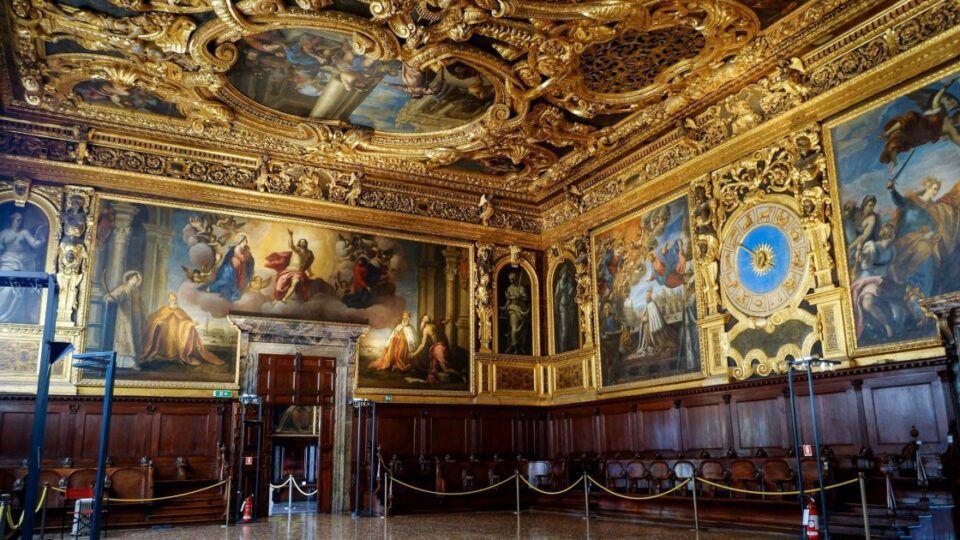You don’t necessarily need to look for buildings labeled “Museum” in Venice. The entire extraordinary city itself is a vast museum of palaces, churches, monuments, and cathedrals, all reflected in the numerous canals of the city, creating an atmosphere of mysterious infinity. It seems to consist of thousands of architectural masterpieces hiding unique works of art. You can’t see everything in one trip to Venice. You need to properly plan your acquaintance with the Museums of Venice and gather as much preliminary information as possible. Then ancient Venice will become closer and more understandable.
You can view the city’s treasures by purchasing a card that allows a one-time visit to specific museums. You can use guided tours, walk independently, or book a ticket in advance to visit any city attraction. Here are some of the most interesting museums in Venice.
Gallerie dell’Accademia
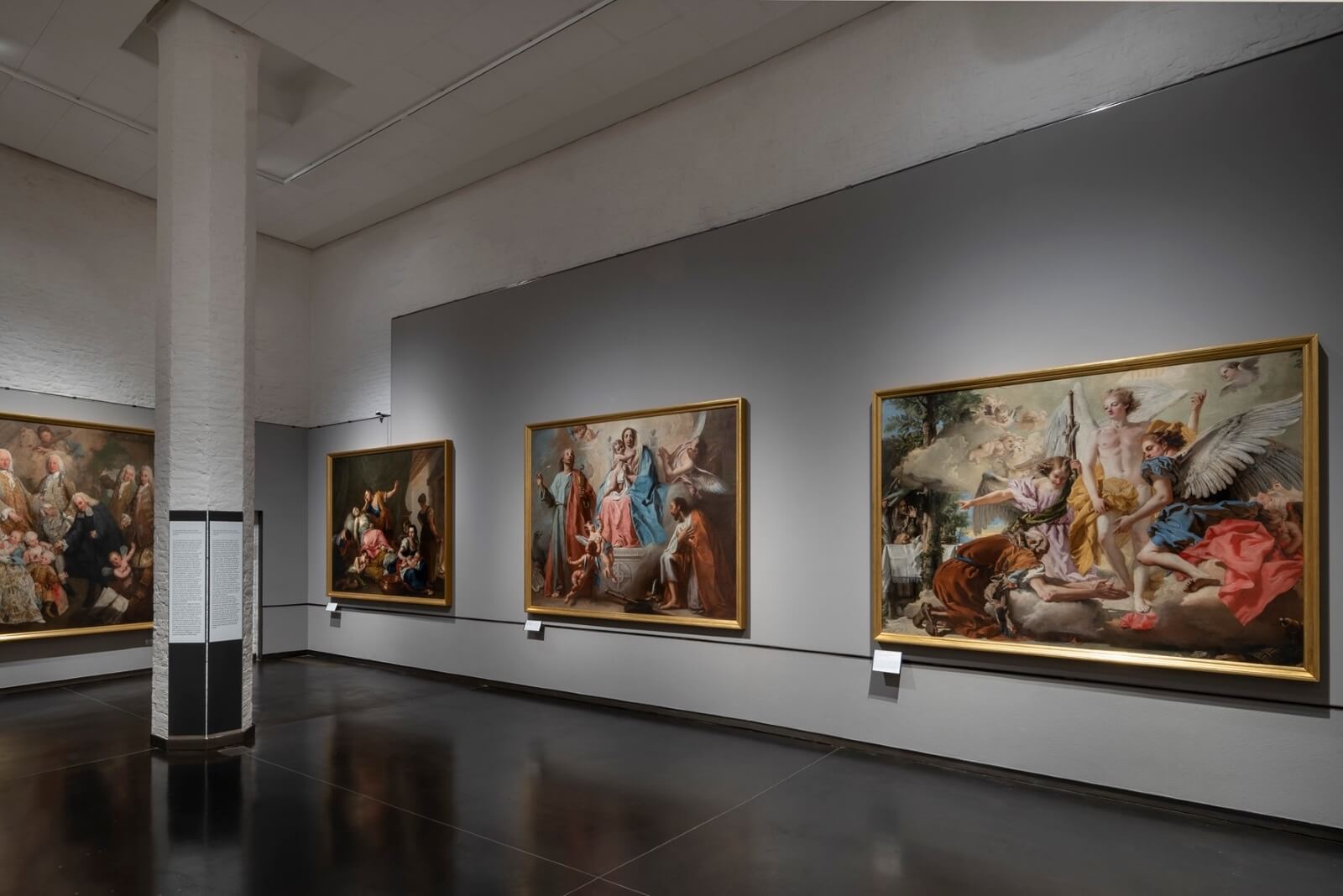
This attraction is considered the best art museum in Venice. It houses the largest collection of Venetian painting from the 14th to the 18th century. Located on the south side of the Grand Canal in the Dorsoduro district at Campo della Carità 1050.
The decision to create the Academy of Arts was made in 1750 with the aim of making Venice a place of artistic education, similar to Rome, Florence, Milan, and Bologna. Talented youth from Italy studied painting and architecture here. For the first time in the country, groups for the training of professional restorers were created within the Academy.
The Fine Arts Royal Academy became its name in 1807. In the 19th century, the school gained museum status. Since then, the museum’s collections have grown, combining works from all famous Italian masters. Works by Titian, Giovanni Bellini, Carpaccio, and Vittore were placed in exhibitions located in several buildings designated for the museum.
These include the premises of a 16th-century monastery and the church of Santa Maria della Carità. The museum’s main collections grew rapidly due to donations from patrons. Initially, all museum elements were placed in five halls. Now, the museum’s exhibitions occupy the space of 25 exhibition halls.
The museum is open to visitors according to the following schedule: Monday from 8:15 AM to 2:00 PM. Tuesday to Sunday from 8:15 AM to 7:15 PM. Closed on holidays. On Valentine’s Day, two tickets are offered for the price of one. All women can visit the gallery for free on March 8. You can reach it via the Grand Canal to the Ponte dell’Accademia stop.
Doge’s Palace
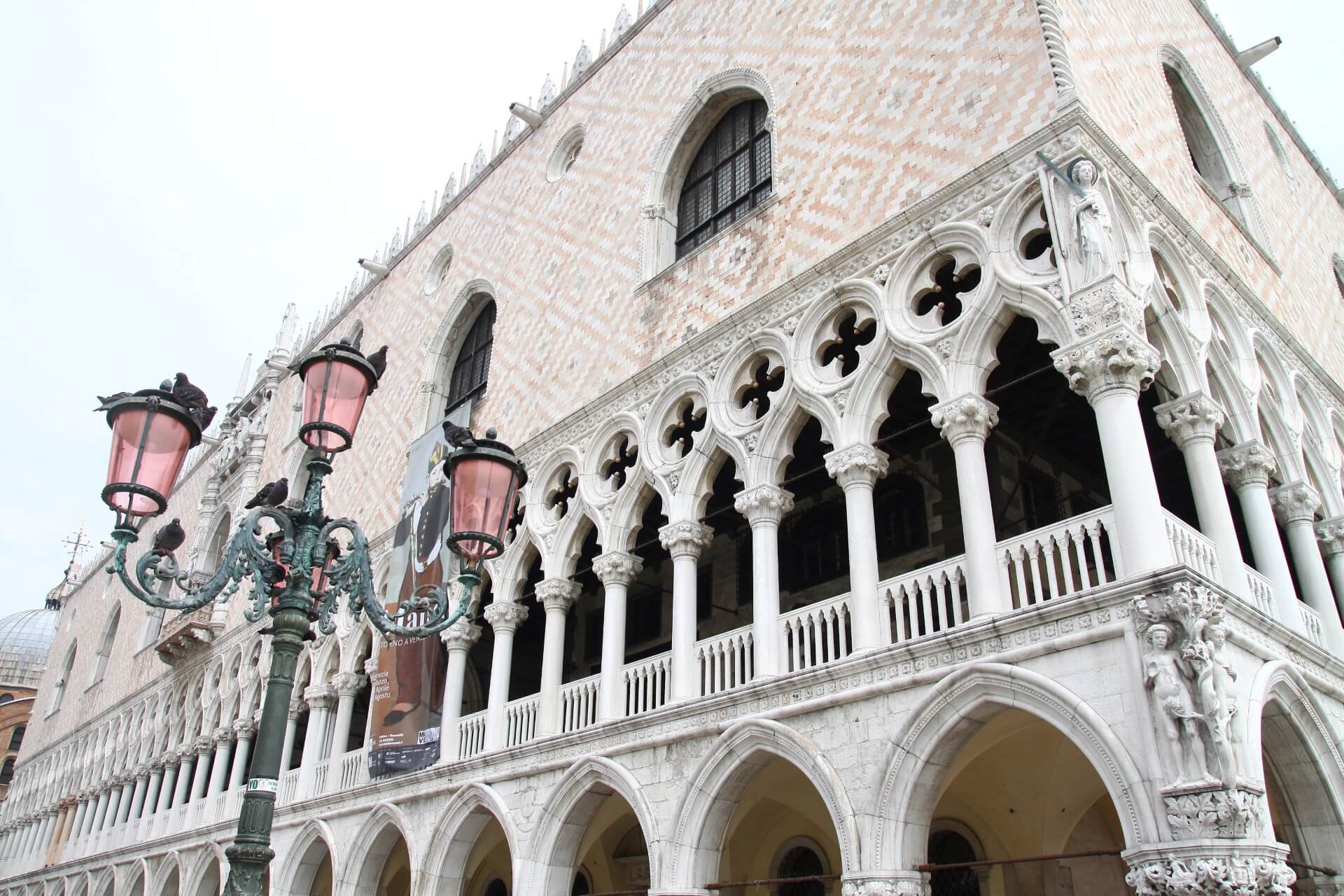
A famous monument of 15th-century Italian Gothic architecture, this important building in Venice adorns St. Mark’s Square. It impresses with the unexpected beauty of its architectural techniques. Since its original construction in 1309 by Filippo Calendario, the building served as the residence of the Doges. It hosted sessions of the Great Council, the Senate, the Supreme Court, and the state’s secret police. Numerous offices, chanceries, and naval departments operated here.
The beauty of its facade, staircases, walls, and ceilings adorned with gold and frescoes creates a stunning effect that attracts visitors. Now the palace houses a museum, open to tourists since 1923. You can see all the ceremonial halls, prison cells reminiscent of deep wells, and hear the history of the following places within the palace:
- Golden Staircase: Built in 1559, it provided passage for important guests listed in the “Golden Book.” The staircase is adorned with interesting gilded figures.
- Giants’ Staircase: Major events, such as the coronation of the Doge, took place here. The staircase, made of Carrara marble and decorated with majestic statues of Mars and Neptune, became a throne during ceremonies.
- Paper Gate: Through it, one could enter the courtyard of the building and the arched Foscarini Gallery. The door is made in the form of a pointed arch, decorated with Gothic elements such as a winged lion and a statue of Justice. In ancient times, scribes worked here, preparing various documents for citizens.
- Great Council Hall: Considered the largest hall in the country. After reconstruction, it features the Doge’s throne, huge chairs for the six members of the Small Council, and portraits of all the Doges. The entire wall is occupied by the famous painting “Paradise,” considered the largest painting in the world. The hall’s windows offer a beautiful view of the lagoon.
- Election Hall: Also known as the Hall of Fate, where sentences were confirmed and officials were elected.
- Compass Hall: Here, the terrifying decisions of the Inquisition were announced, and the “Lion’s Mouth” for denunciations was located.
- Council of Ten Hall: This tribunal of ten members, led by the Doge, conducted investigations into state criminals. Above the hall were prison cells.
You can also visit the halls of Scarlatti, Maps, the College, the Senate, and the Prison. The palace is open daily from 8:30 AM to 7:00 PM (April to November).
Address: Palazzo Ducale, San Marco 1, Venice, Italy.
Biblioteca Marciana
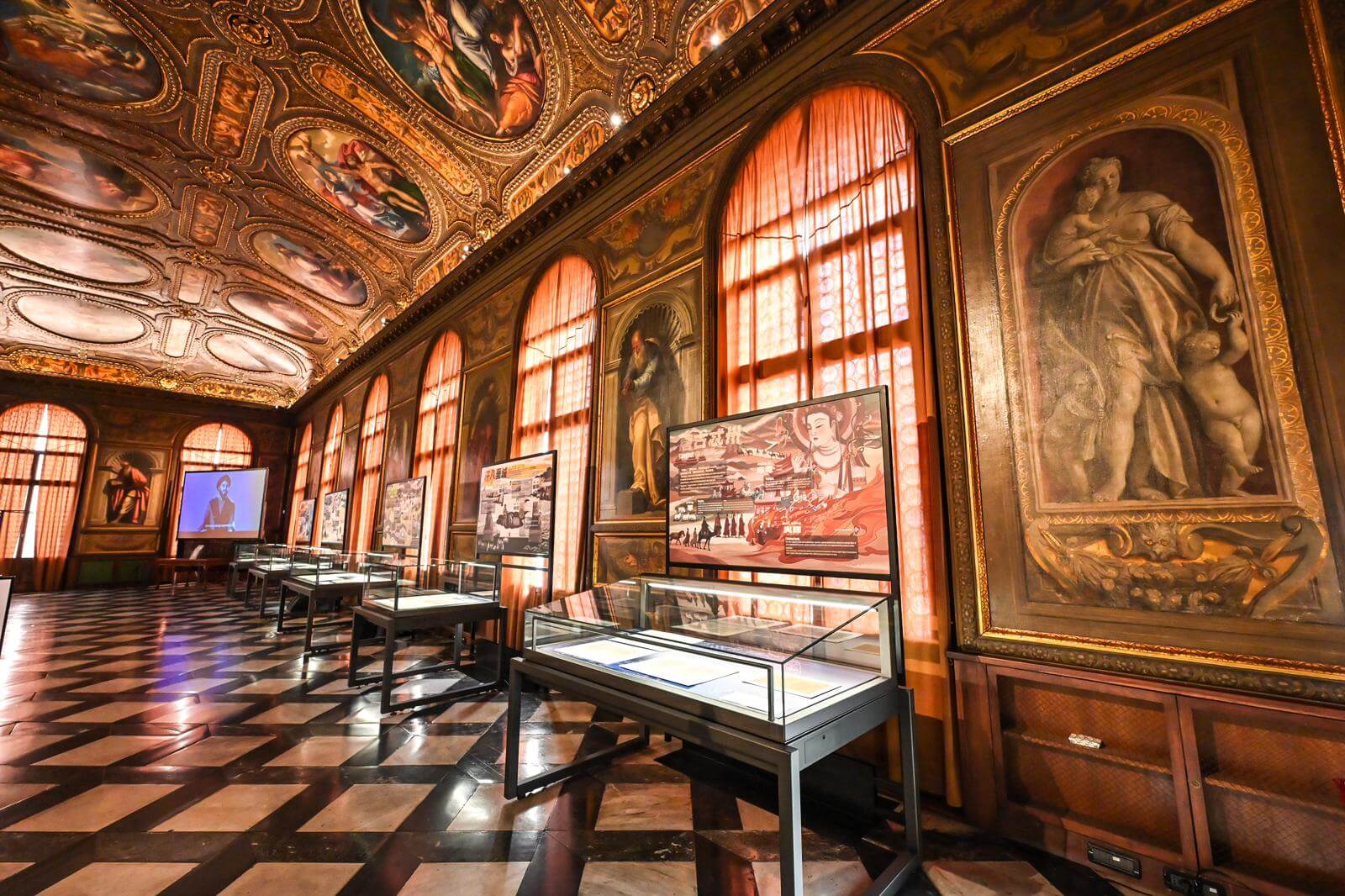
You can’t miss the beautiful Renaissance building adorned with arches, columns, and sculptures. Behind the lace arcades of the walls are the treasures of the National Library of Venice. Thanks to the initial collection created by Cardinal Bessarion in 1469 and gifts from aristocratic families and monasteries, the library’s collection became the largest in Venice. It now houses about 13,000 manuscripts, 2,883 incunabula, and 24,055 publications from the 16th century, the era of early printed books.
In more than a million early printed volumes, you will find works of ancient scholars and philosophers (Aristotle, Euclid, Aeschylus) holding great scientific value and becoming world heritage. Among them are 13 volumes containing anatomical illustrations done by hand, gifted in 1619, and 216 ancient manuscripts donated in 1734.
The collection includes 360 manuscripts with the authentic will of the famous Marco Polo, rare scores of old operas. It now houses one of the largest collections of classical texts in the world. The 1603 law, which required a copy of every book published in Venice to be provided to the library, greatly contributed to this.
You can see beautiful bookcases and feel the atmosphere of mysteries hidden behind the covers of ancient editions by purchasing a single ticket for the San Marco museums.
Located at Piazzetta S. Marco, 7, 30124 Venice. Open from 8:00 AM to 7:00 PM, Monday to Friday. Some library departments may have different hours.
Ca’ Rezzonico
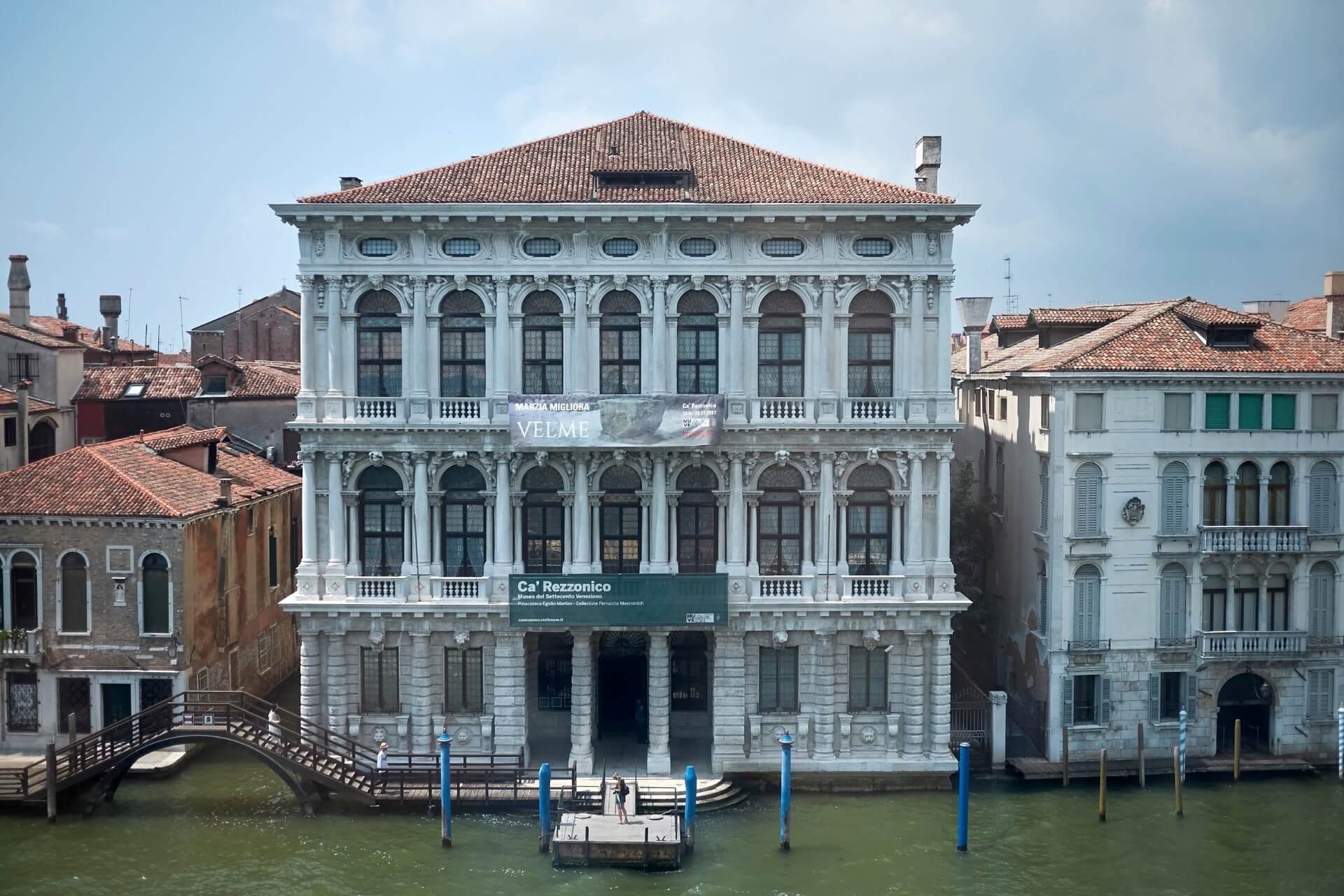
The modern Museum of 18th Century Venice is located in an old house inherited from the famous Rezzonico family. In the country’s dialect traditions, “Ca” meant “house” or “casa.” There are many such palaces in Italy. They were often built according to a standard design for trading goods delivered by canals. The main hall, where clients came for the delivered goods, was on the lower floor. The owner’s living quarters were on the second floor.
The servants lived on the top floor. The front of the building faced the canal, and a well stood in the courtyard. The palace’s construction was completed in 1756. By that time, the building had been expensively decorated by famous Venetian artists. Gradually, the palace turned into a rich museum with art objects displayed in a natural, historical setting. These include famous paintings by Tiepolo, Giovanni Domenico, Francesco Guardi, and Pietro Longhi.
All three floors display items that surrounded the lives of wealthy Venetians in the 18th century. Now, the Throne, Ballroom, Lazzarini, Reception, and Tiepolo halls have been restored and opened to visitors. Here you can see beautiful carved furniture made from expensive types of wood, crystal chandeliers, mirrors, ceiling frescoes, and luxurious ornaments typical of the era.
You can reach the museum at Dorsoduro, 3136, fondamenta Rezzonico by vaporetto route No. 1 along the Grand Canal. The stop is called Ca’ Rezzonico. From April to the end of October, the museum is open from 10:00 AM to 6:00 PM.
Museum of Oriental Art at Ca’ Pesaro
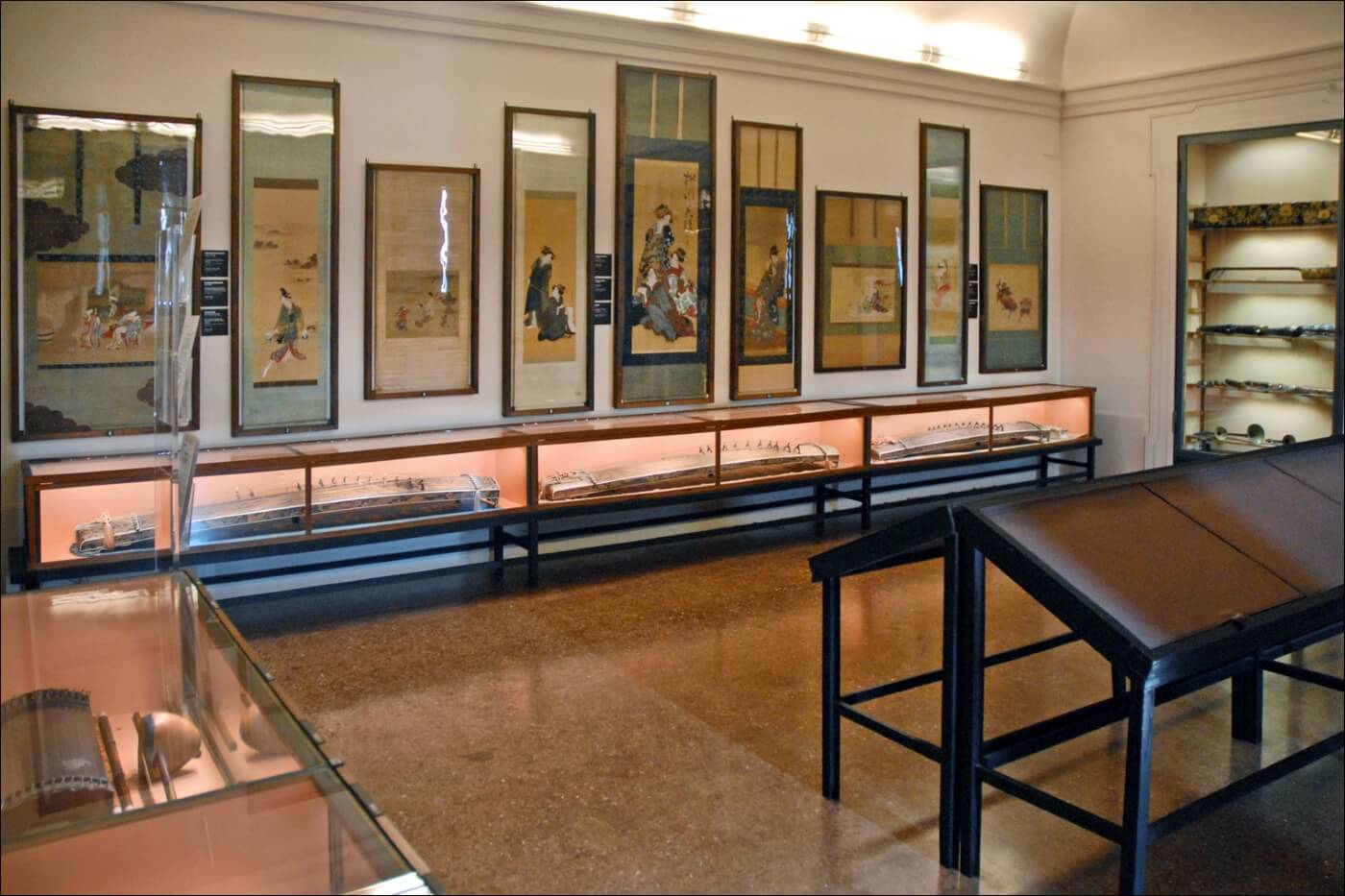
The museum is located in the house of the noble Pesaro family, built in 1710 in the Venetian Baroque style by architect Baldassare Longhena. The beautiful, white palace is situated in the historic Santa Croce area. Since the early 20th century, it has housed a collection of 19th and 20th-century paintings and sculptures, with the status of the International Gallery of Modern Art. The rich exhibitions feature works by Chagall, Miró, Matisse, Klee, Klimt, Maliavin, and other famous masters.
The top floor houses the Museum of Oriental Art. It exhibits items from China, Japan, and Indonesia, including many interesting enamel and porcelain figurines, paintings, swords, daggers, and other weapons.
Located at Santa Croce, 2070, fondamenta Ca’Pesaro. Open from April to the end of October, from 10:00 AM to 6:00 PM. Closed on Mondays.
Natural History Museum
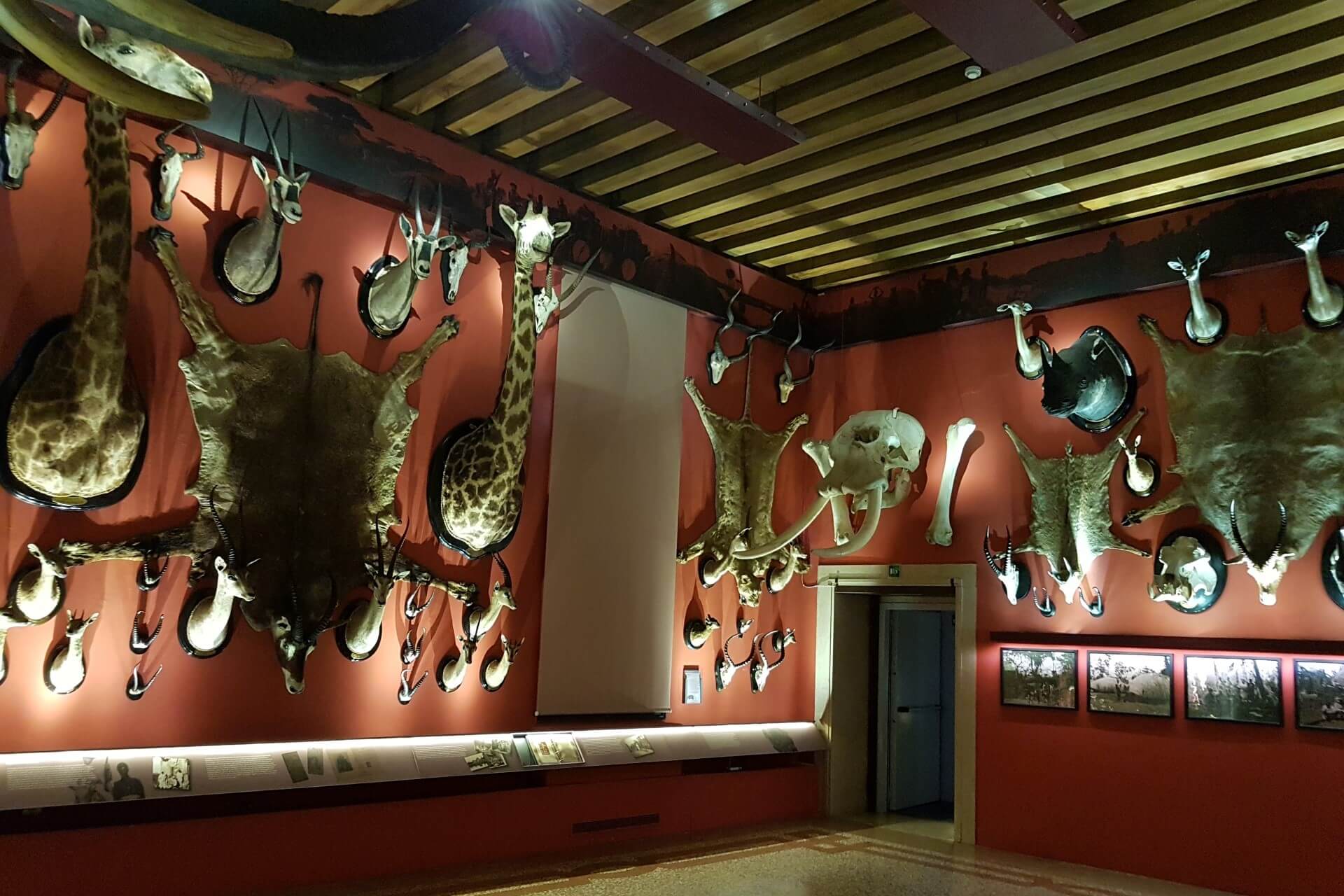
In an old building constructed in the 13th century for wealthy merchant families, visitors with children can find real wonders of nature. Exhibits of dinosaur skeletons, which once freely roamed our planet, elicit extraordinary delight and amazement.
The idea of combining scientific collections into the Venetian Museum of Natural History emerged in 1923. The empty palace was transformed into thematic halls dedicated to local fauna and flora. Rich herbaria, collections of insects, minerals, fossils, marine plants, and animals are displayed in spacious halls.
The building houses a library with scientific publications related to the museum’s profile. A large aquarium is filled with almost all existing types of invertebrates and fish, revealing the Adriatic ecosystem. The Ethnography Hall provides insight into the life and customs of Venice’s population. The museum has sections on Earth Sciences, Botany, and Zoology. There is also a laboratory for repairing and restoring damaged exhibits, conserving fossils, and mollusks.
Located at Santa Croce, 1730, Salizzada del Fondaco dei Turchi. Open from 10:00 AM to 6:00 PM. Closed on Mondays.
Fortuny Museum
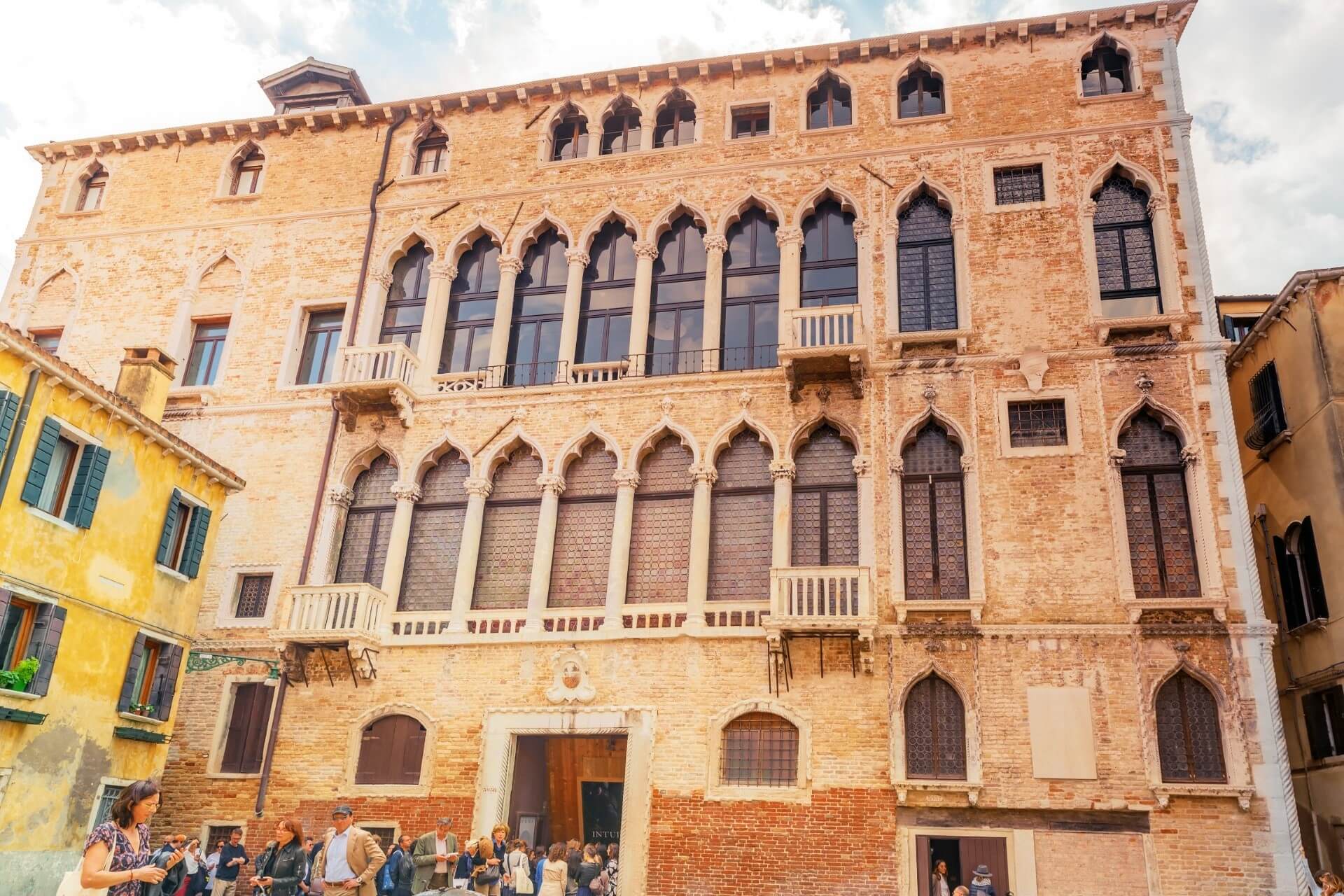
The old Gothic-style palace is considered an ornament of the San Marco district of Venice. Once the city’s tallest building, it belonged to the Pesaro family until the late 19th century. It was then bought by artist and designer Mariano Fortuny, who turned it into a place for creating amazing works. These included paintings, theater decorations, photographs, and original textile designs. All the works became the heritage of the future museum, established in 1956 and dedicated to Fortuny.
The museum’s collection consists of 150 paintings and photographs made using various techniques. Elements built on complex light effects, collections of fabrics, costumes, ornaments, and velvet items from the Renaissance era designed by the artist. Models of long pleated silk dresses designed by the master are still popular at international auctions. The museum strongly exudes the atmosphere and charm of the era.
Address: Museo Fortuny, San Marco, 3780. Open daily, except Tuesday, from 10:00 AM to 6:00 PM.
Naval History Museum
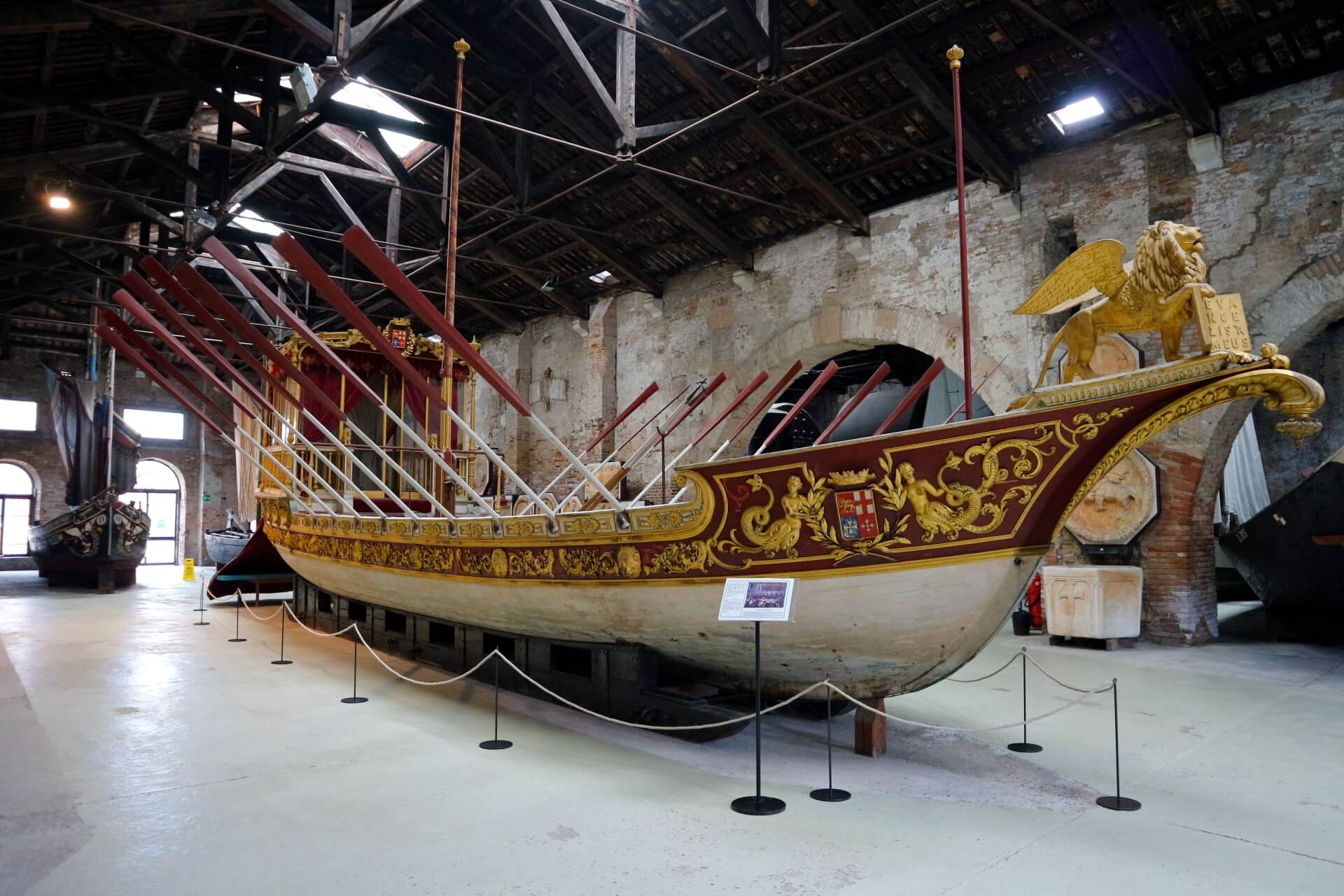
Venice’s life has always been connected to the sea. Its wealth, culture, and traditions were formed through the use of sea routes and local natural resources. Various types of ships and naval vessels were built in the country. For the Doges, floating palaces held a special place, used for events like the “Bucintoro,” a ship used for the “Marriage with the Sea” ceremony by the last ruler of Venice.
The boat, distinguished by its rich gold decorations and original sculptures (only a small part of which has survived), is a pride of the museum, established in 1919. Here, you can learn about the history of the Venetian fleet and see a collection of unique exhibits.
These include ship models, original archival documents, weapons, awards, old uniforms, hats from around the world, portraits of famous admirals, and samples of torpedoes. The museum’s cabinets house a fascinating collection of thousands of shells. The total number of exhibits exceeds 25,000 items.
The museum is located to the left of the Arsenal of Venice. The simple building with an anchor at the entrance has five floors, 42 exhibition halls, and a ship pavilion called the “Workshop of the Oar.” It houses the largest vessels.
Address: Castello, 2148, campo San Biagio. Open Monday-Thursday from 8:45 AM to 1:30 PM. On Fridays, exhibits can be viewed from 8:45 AM to 5:00 PM. Open on Saturdays and Sundays from 10:00 AM to 5:00 PM.
Museo Correr
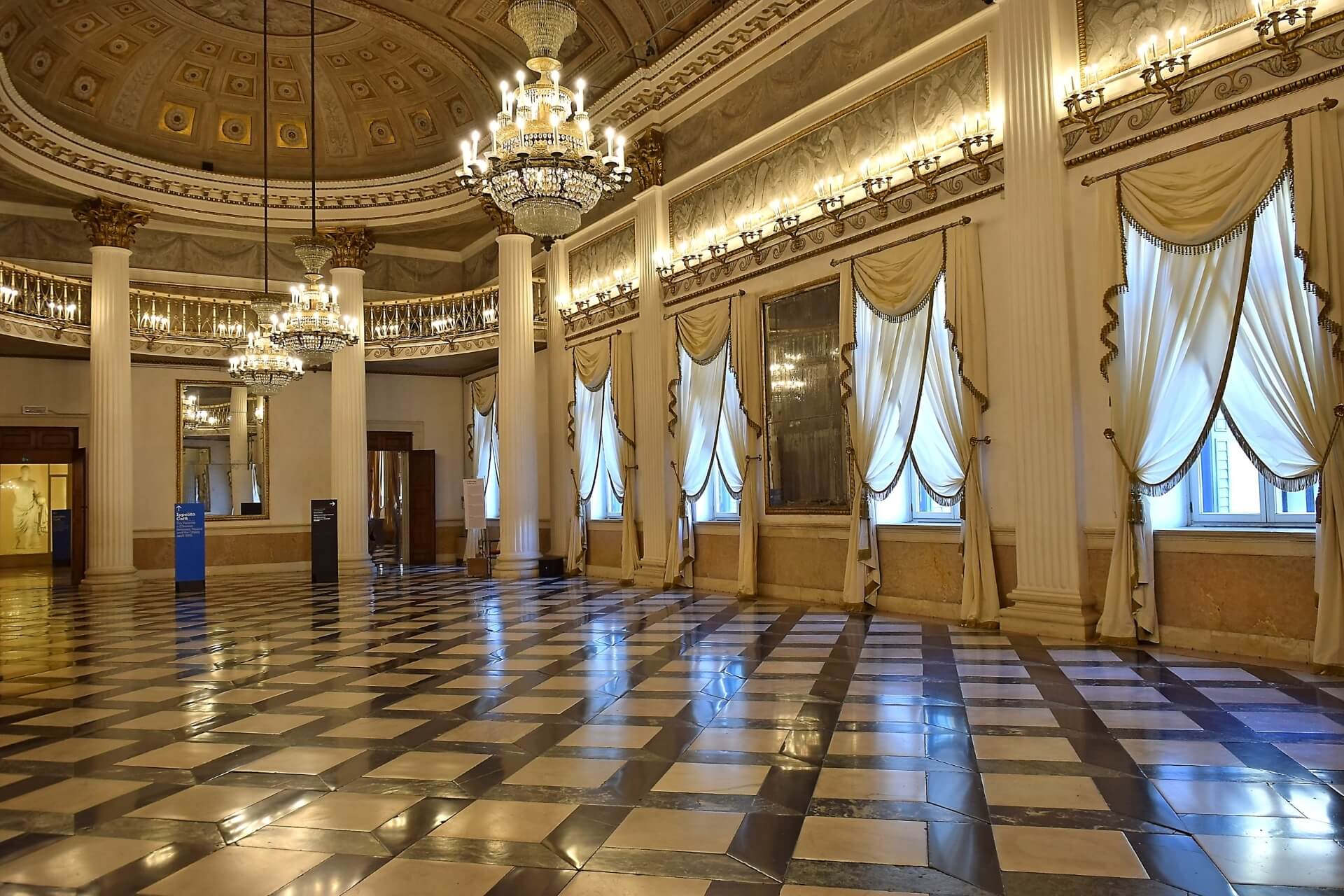
The history is linked to the name of the famous aristocrat Teodoro Correr. The formation of the museum’s collections began with his gift of a rich collection of paintings, valuable art objects, and his own home to the city. This grew into the famous museum, occupying 33 halls across three floors of the building. Since 1830, permanent exhibitions have been created, reflecting various aspects of the population’s life over different periods. The following exhibitions are of particular interest:
- Correr Collection: Includes interesting views of Venice from different historical periods, documents, old clothing, coins, and a monastic library.
- Painting Collection: Works by Venetian school painters, including the famous painting “Two Venetian Women” by Carpaccio and “Crucifixion” and “Transfiguration” by Bellini, considered 15th-century masterpieces.
- Risorimento Museum Collection: Rare exhibits form a true representation of the 19th-century historical period in Italy. These include old documents, engravings, costumes related to the fall of the republic and the changing borders of Italy.
Located in the Procuratie buildings on St. Mark’s Square, opposite the basilica. Open from 10:00 AM to 7:00 PM from April to the end of October. From November to March, the museum is open from 10:00 AM to 5:00 PM.
Lace Museum
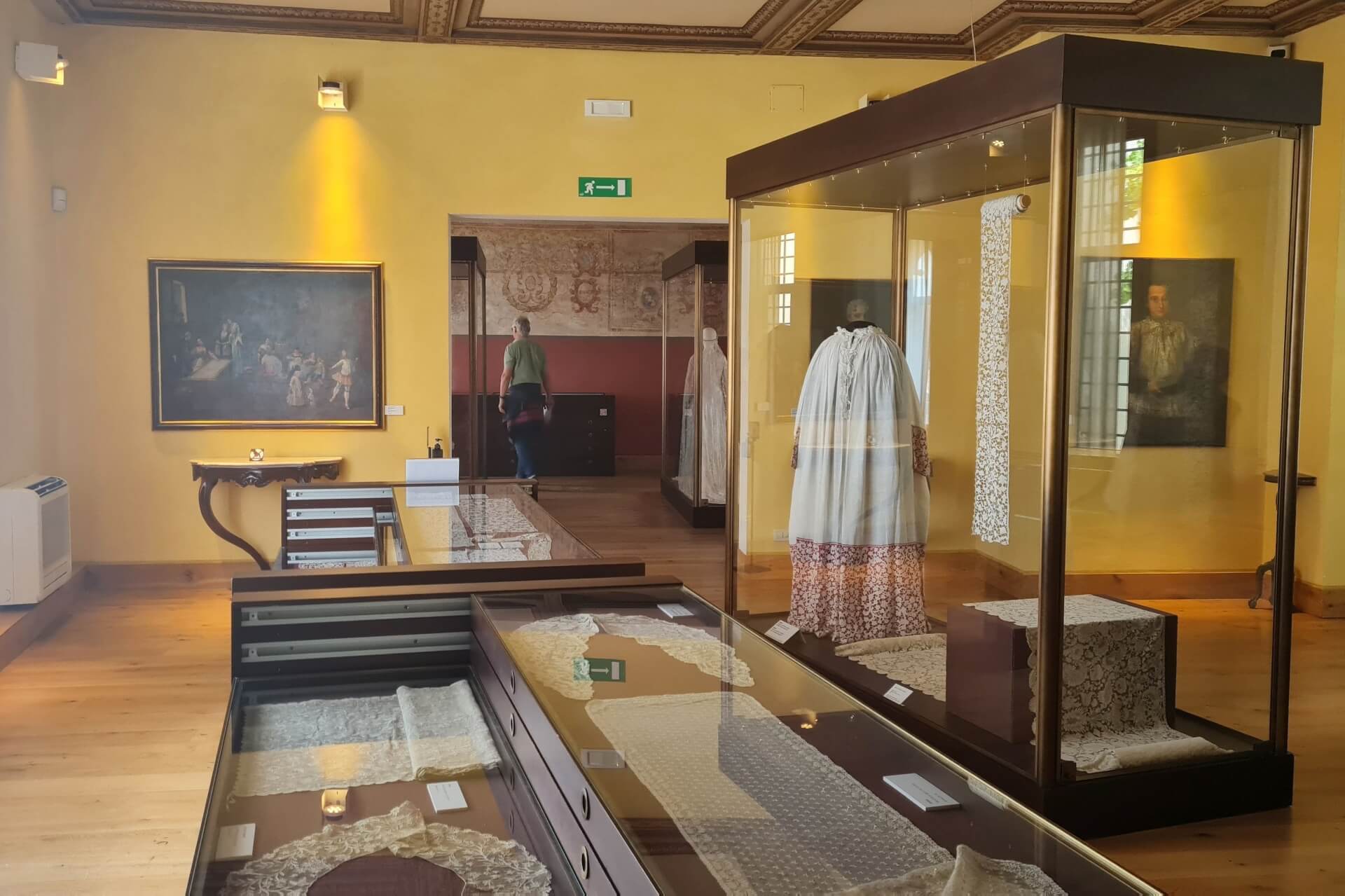
In 1981, on the island of Burano, located 9 km from Venice, an interesting museum opened that combined exhibits considered symbols of the country along with the famous gondolas. The works of masters from the Venetian lace school, operating since 1872, were created based on ancient lace-making traditions.
The preservation of the unique craft’s knowledge and the training of its successors became the museum’s mission. The value of lace makers’ handwork worldwide was equated to the price of gold. Now, only in the museum can you see genuine Venetian lace made from gold and silver threads from the 16th to the 20th century.
Looking at the works, you start to believe the ancient legend that a fisherman’s wife invented them, creating a pattern reminiscent of seaweed. The intricate designs were made using a needle, not a hook, or bobbins. On the top floor, there is an exhibition of numerous tools used for making lace.
The collection includes a sample of lace made without a base, resembling weightless cobwebs. The exhibits are displayed on three floors of the building, which served as the lace school, at Piazza Galuppi, 187, 30142 Burano.
Open from 10:00 AM to 6:00 PM in summer. In winter, the working hours are one hour shorter. You can reach the island by vaporetto 42, 43, 41.
Peggy Guggenheim Collection

The museum, created by the efforts of collector Peggy Guggenheim, is considered a popular attraction in Venice. For 30 years, exhibitions of contemporary artists’ paintings were held behind the walls of an 18th-century palace.
This was one of the pleasures of the wealthy heiress, who valued and understood art, published magazines, and provided financial support to talented masters. The bohemian life of the social elite of that time would have been dull and uninteresting without Peggy’s energy. She was the last representative of Venice’s privileged society allowed to own a gondola.
After her death in 1979, the collection of 300 works by 20th-century artists became a museum asset. Over time, the collection was supplemented with gifts from wealthy families. Among the paintings in Peggy Guggenheim’s collection are works by Picasso, Dalí, Kandinsky, Mondrian, and others.
Located in the Palazzo Venier dei Leoni, standing on the Grand Canal at Dorsoduro, 701, calle San Cristoforo.
You can view the exhibits daily from 10:00 AM to 6:00 PM. Closed on Tuesdays.
Murano Glass Museum
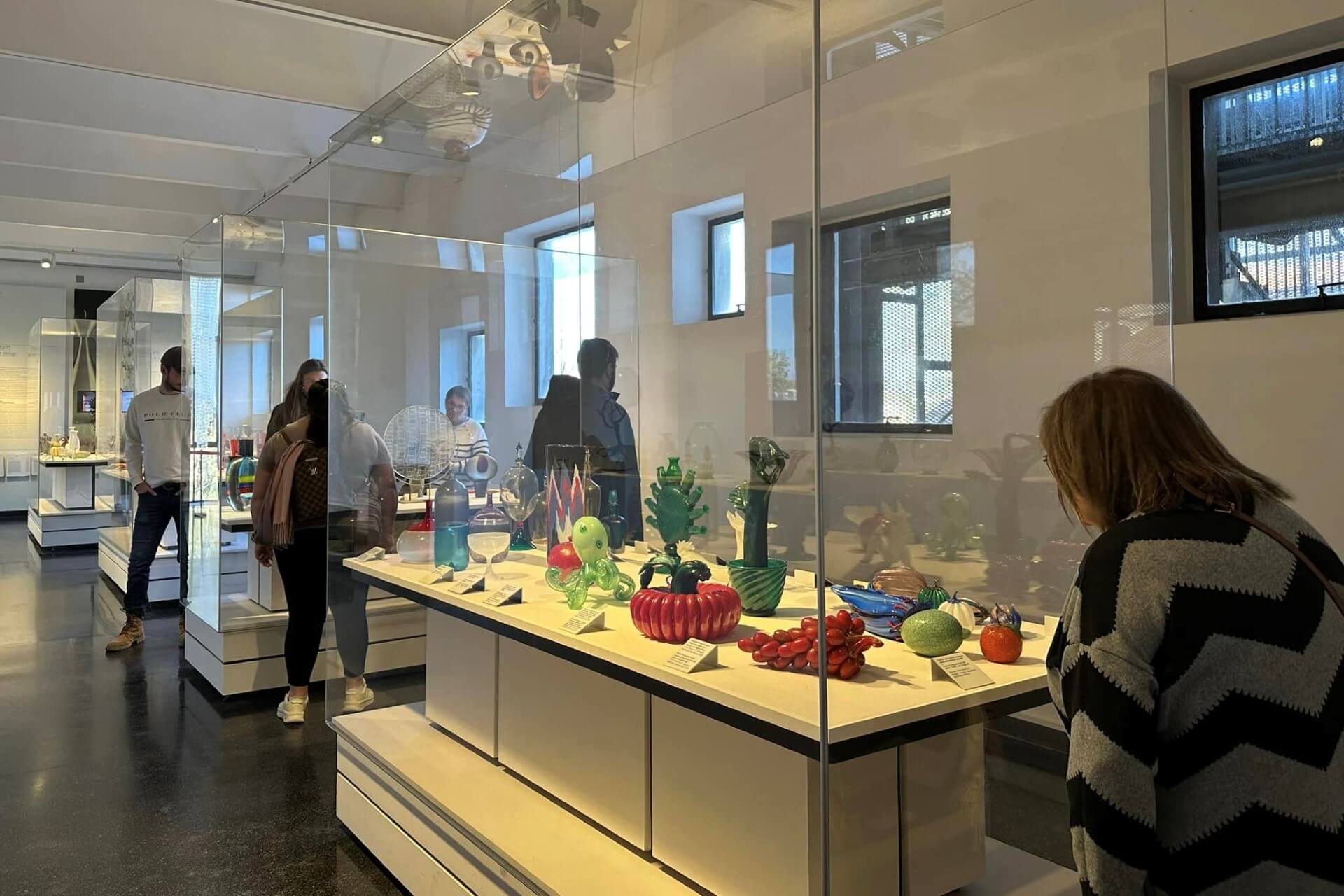
The fame of the glassblowers of Murano Island has been known since the distant 1290s. Fearing fires, city authorities moved the fire-prone production to the Venetian Lagoon island. The secret process of creating amazing glass figurines and various items was passed down through generations of glassblowers.
Unique technologies allowed the creation of ultra-thin items from natural quartz crystals. Smalti (enameled glass), items with gold threads (aventurine), imitation of precious stones, and colored glass.
In the complex, established in 1851, you can not only see masterpieces of Murano glass but also learn about the creation processes, listen to an interesting lecture on the history of glassmaking, and buy an original souvenir, vase, or panel. Open from 10:00 AM to 6:00 PM.
Reachable by vaporetto 41, 42, 52, 51 from the train station.

